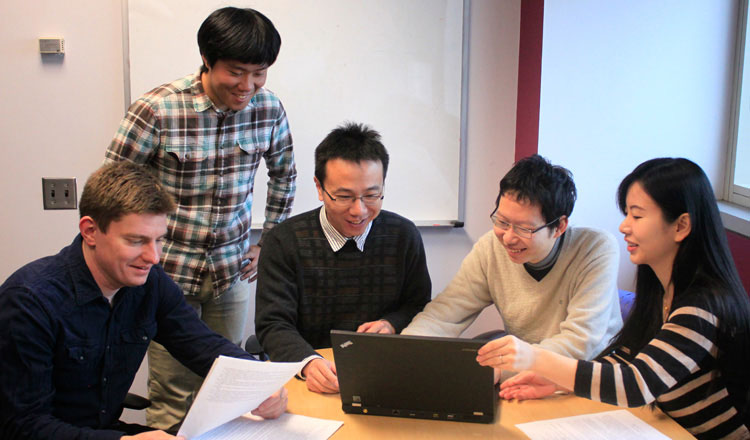Our first ever AT&T SDN Network Design Challenge encouraged some of the brightest minds in higher education to work together and innovate.
The responses impressed us. It let us gain a better understanding of how different strategies within a software-centric environment can help improve network routing.
Cornell University is the AT&T SDN Network Design Challenge winner. I spoke with Kevin Tang, the team’s associate professor, to find out more about how and why they decided to participate.

Q: Kathy- What excites you most about a software-centric network?
A: Kevin Tang, Associate Professor-
As the growth of data continues to snowball due to trends like the Internet of Things and mobile data, the demand for fast, efficient and flexible networks increases exponentially. It requires a whole new network architecture and more dynamic and easy-to-use network management.
Previously, due to the tight integration of software and hardware in network devices, there was always a barrier of transferring networking technology developed in academia to the industry. Many good ideas and solutions remained in academic papers. Now as we move to a software-centric network, networking functions and features will be realized through “programming” instead of “configuring” the network. Overall, a software-centric network enables rapid innovations deployed in cost-effective and less disruptive ways. This approach to networking lets us create a network that can keep up with the growing demand for resilient, high-performance connectivity from end-user applications.
This trend is extremely exciting for us. So much so that Dr. Nithin Michael and I are working with a venture-backed startup, Waltz Networks, to put this real-time dynamic network management technology into production. We developed this technology over the last six years and look forward to bringing it to market with Waltz Networks.
Q: Kathy Meier-Hellstern, AT&T- What was it like to participate in AT&T’s SDN Network Design Challenge?
A: Kevin- I learned about AT&T’s SDN Network Design Challenge when I was invited to give a talk at AT&T Labs last summer. I instantly found it very interesting and useful. While preparing our solution, my team and I were able to use several concepts that we had been developing. It was extremely exciting to see our designs come to life during the challenge. Because this was a much larger scale challenge than we usually get to work with in academia, we were able to solve problems we usually did not consider. As a result, we learned a lot during this process.
Q: Kathy- What made this competition unique?
A: Kevin- My team and I have never participated in such a thought-provoking competition before. What made this competition unique is that the setting was very realistic, and therefore, very different from the types of exercises and projects in academia. AT&T asked us to design a very large-scale network. We needed to consider thousands of possible failure cases and provide different performance guarantees to different classes of traffic. In addition, inputs such as hourly traffic demand and calculating cost were all based on realistic data. AT&T did a great job in defining a highly complex and interesting problem so well.
Q: Kathy- What was the most challenging part about the competition?
A: Kevin- The most challenging part was balancing the quality and feasibility of the solution. It is this trade-off that made the competition difficult and different from other exercises, where we only solve for either quality or feasibility. Large scale engineering problems always require trade-offs and such problems are often very challenging. Since the trade-offs are hard to precisely quantify, they become more of an art than science.
Q: Kathy- What did your team learn throughout the challenge process?
A: Kevin- At universities, we emphasize fundamentals, abstract thinking and reasoning. We tend to study things in more general and idealized settings. Students may get frustrated when they face a concrete and complex problem, only to find out that the theoretical results they learned do not immediately lead to a solution. This is a misunderstanding of the value of theory. It is really about providing a framework to think about problems, create possible solutions and make choices. After we make choices, realizing a good practical solution always involves hard effort to deal with problem specifics. The whole process is longer than a pure academic project of similar scope. It definitely brings great feeling of achievement and satisfaction after we deliver the solution.
Q: Kathy- Are you open to collaborating with AT&T on similar network challenges in the future?
A: Kevin- Absolutely! AT&T presented a very interesting challenge. I look forward to participating in similar opportunities in the future.

Kathy Meier-Hellstern – Assistant Vice President in the AT&T Advanced Technology Platforms and Architecture organization
– See more at: http://about.att.com/innovationblog/sdn_challenge#sthash.na1abjRo.dpuf
PR Archives: Latest, By Company, By Date